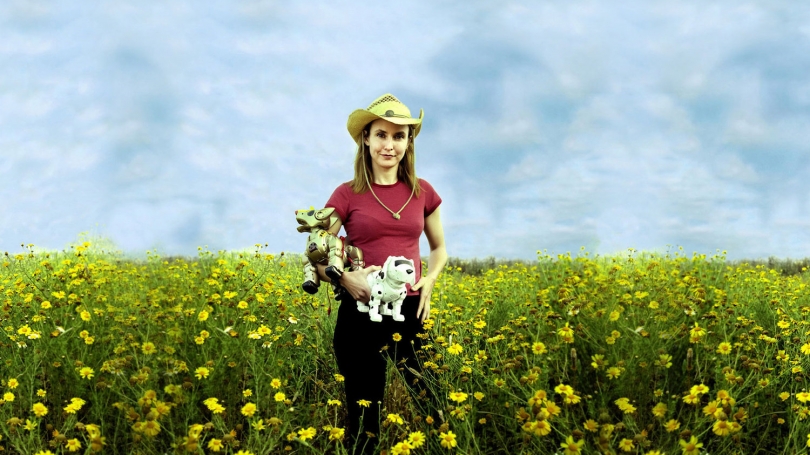
- Undergraduate
- Disciplines
- Artists-in-Residence
- Exhibitions
- Internships
- News & Events
- People
Back to Top Nav
Back to Top Nav
Back to Top Nav
Back to Top Nav
Back to Top Nav
Back to Top Nav
Back to Top Nav
Please join the Studio Art Department in welcoming our spring term 2018 Artist-in-Residence, Natalie Jeremijenko.
Artist talk: At 4:45 p.m. on April 3, 2018, in the Loew Auditorium, Black Family Visual Arts Center. Opening reception to follow at 5:45 p.m. in the Jaffe-Friede Gallery, Hopkins Center for the Arts.
Her exhibition will run from April 3 to April 29, 2018, in the Jaffe-Friede Gallery.
Natalie Jeremijenko is an artist and engineer whose background includes studies in biochemistry, physics, neuroscience, and precision engineering. She is an active member of the net.art movement, and her work primarily explores the interface between society, the environment, and technology. She has alternatively described her work as “X Design” (short for experimental design) and herself as a “thingker”, a combination of thing-maker and thinker. In 2014 she received the VIDA Art and Artificial Life International Awards Pioneer Prize "for her consistently brilliant portfolio of work over the past two decades. Also recognized as the 2013 Most Innovative People, named of the most influential women in technology 2011, one of the inaugural top young innovators by MIT Technology Review, and 40 most influential designers. Jeremijenko directs the Environmental Health Clinic, is an Associate Professor in the Visual Art Department, NYU, and affiliated with the Computer Science Department and Environmental Studies program. Previously she was on the Visual Arts faculty at UCSD, Faculty of Engineering at Yale University, a visiting professor at Royal College of Art in London, a Distinguished Visiting Professor in the Public Understanding of Science at Michigan State University, and a Visiting Global Distinguished Professor at they NYU College of Arts and Sciences. Her degrees are in biochemistry, engineering, neuroscience and History and Philosophy of Science.